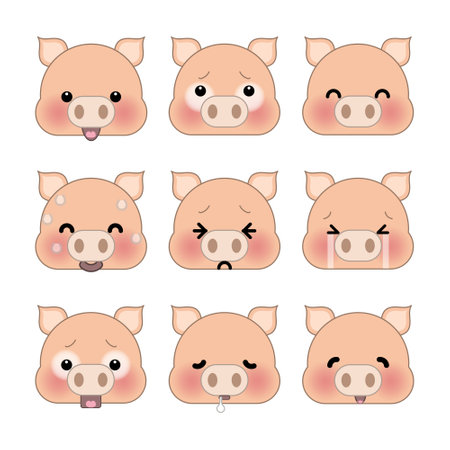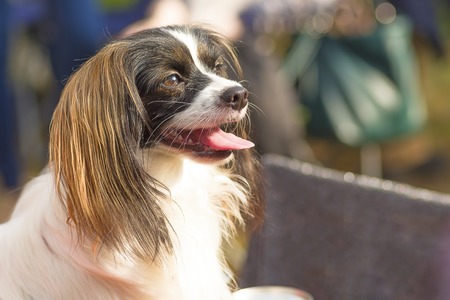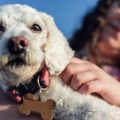1. Choosing the Right Gear
Before you start teaching your dog how to walk on a leash without pulling, its important to choose the right gear. The right leash, harness, and collar can make training easier and ensure your dog’s comfort and safety during every walk.
Leash Options
When it comes to leashes, there are a few different types you’ll find at any American pet store:
| Type of Leash | Description | Best For |
|---|---|---|
| Standard Leash | Usually 4-6 feet long, made from nylon or leather. | Everyday walks and training sessions. |
| Retractable Leash | Allows adjustable length, but less control over pulling. | Experienced handlers and dogs with good leash manners. |
| Hands-Free Leash | Wraps around your waist for hands-free walking. | Jogging or walking with active dogs. |
Harness vs. Collar
While collars are common, many pet experts in the US recommend using a harness for leash training—especially if your dog tends to pull. Here’s why:
- Collar: Good for holding ID tags and short walks. Not ideal for strong pullers as it can put pressure on the neck.
- Harness: Distributes pressure across the chest and shoulders. There are front-clip harnesses that help prevent pulling by gently guiding your dog back toward you if they lunge forward.
| Type | Main Benefit | Recommended For |
|---|---|---|
| Buckle Collar | ID tags; quick trips outside. | Puppies, calm walkers. |
| No-Pull Harness (Front Clip) | Reduces pulling; better control. | Puppies, strong pullers, new learners. |
| Back-Clip Harness | Easier for daily walks; comfortable fit. | Small breeds, calm walkers. |
Pro Tip:
If you have a small breed or a dog with delicate throats like pugs or Yorkies, always opt for a harness instead of a collar to avoid injury.
Comfort and Fit Matter!
No matter what gear you pick, make sure it fits your dog well. You should be able to fit two fingers between the collar or harness and your dog’s body—it shouldn’t be too tight or too loose. Always check for signs of rubbing or discomfort after walks and adjust as needed. With the right setup, you’re ready to start teaching your pup polite leash manners!
2. Introducing the Leash in a Positive Way
Making sure your dog feels good about the leash is the first step to a successful walk without pulling. Dogs are naturally curious, but some can feel unsure or even scared when you bring out something new like a leash. Here’s how you can make leash time something your pup looks forward to.
Let Your Dog Explore the Leash
Before putting the leash on, let your dog sniff and check it out. Hold the leash in your hand and offer it to your dog to investigate. This helps remove any fear or anxiety they might have about this new item.
Pair the Leash with Positive Experiences
Every time you show your dog the leash, give them a treat or their favorite toy. Use a happy voice and praise them for showing interest. This creates a positive association with the leash and helps your dog understand that good things happen when the leash appears.
| Step | Action | Reward |
|---|---|---|
| 1 | Show the leash to your dog | Treat or gentle petting |
| 2 | Let your dog sniff and touch the leash | Praise and treat |
| 3 | Clip the leash on for just a few seconds indoors | Treat and calm encouragement |
| 4 | Remove the leash before your dog gets uncomfortable | Praise and playtime |
| 5 | Repeat these steps daily until your dog is relaxed with the leash on | Cuddles, treats, and excitement for walks ahead! |
Create Fun Leash Rituals at Home
You don’t have to wait until you go outside. Practice walking around inside with the leash on for short periods. Keep sessions upbeat—give lots of praise, treats, and maybe even play fetch while your dog wears the leash. The goal is to help your dog see the leash as part of fun times together.
Troubleshooting Common Leash Fears
If your dog seems nervous about the leash, take it slow. Don’t force it on them—instead, back up a step and reward calm behavior near the leash. With patience, most dogs will come around and start getting excited when they see you grab that leash for walk time.

3. Teaching Basic Leash Manners at Home
Before you and your dog hit the neighborhood sidewalks, its important to start leash training in a quiet, familiar environment—your home! This helps your pup focus on you, rather than being distracted by squirrels, cars, or other dogs. Here’s how you can use positive reinforcement strategies to help your dog learn to walk calmly at your side.
Set Up a Distraction-Free Training Zone
Find a space in your living room, hallway, or backyard where there are minimal distractions. Keep toys, food bowls, and other pets out of sight during training sessions.
Start with Short Training Sessions
Short and sweet is the key! Aim for 5-10 minute sessions a couple of times each day. Dogs learn better in small increments, especially when theyre just getting started.
Positive Reinforcement Basics
Use treats, praise, or your dogs favorite toy as rewards when they do something right. The goal is to make walking calmly next to you more rewarding than pulling ahead. Here’s a simple way to structure your practice:
| Step | What to Do | Reward |
|---|---|---|
| Stand still with your dog on leash | Wait until your dog looks at you or stands calmly beside you | Treat and praise |
| Take one step forward | If your dog stays by your side without pulling, stop and reward | Treat and praise |
| Your dog pulls ahead | Stop walking immediately. Wait for them to return to your side or give attention back to you | Treat and praise once they’re back by your side |
| Repeat steps gradually increasing steps taken together | Add more steps as your dog gets better at walking with you | Treat and praise after each successful attempt |
Tips for Success at Home
- Always use a comfortable, well-fitting harness or collar.
- Keep plenty of small treats in your pocket for quick rewards.
- If your dog gets distracted, calmly redirect their attention back to you using their name or a cue like “let’s go.”
- Patience is key—every dog learns at their own pace!
The Power of Consistency
The more consistent you are with these home-based leash manners, the quicker your pup will catch on. Remember: practice makes perfect. Once your dog is confidently walking by your side at home, youll be ready for more challenging environments soon!
4. Handling Distractions and Real-World Walks
Now that your dog understands the basics of walking nicely on a leash at home or in your backyard, it’s time to add some real-life challenges. Walking in your neighborhood or at the park means dealing with distractions like other dogs, people, squirrels, and even passing cars. Here’s how you can help your dog stay focused and keep those walks enjoyable for both of you.
Gradually Introducing Distractions
Don’t rush straight into busy areas. Start by practicing in quiet places and slowly increase the level of distractions as your dog gets better at focusing on you. Here’s a step-by-step approach:
| Step | Location Example | What to Focus On |
|---|---|---|
| 1 | Backyard or quiet street | Practice basic leash skills with few distractions |
| 2 | Slightly busier sidewalk | Add one or two distractions, like parked cars or distant people |
| 3 | Neighborhood during off-peak hours | Introduce moving cars, joggers, or other leashed dogs far away |
| 4 | Local park (not crowded) | Work around more sounds, smells, and occasional dogs or kids playing nearby |
| 5 | Crowded park or downtown area | Your dog practices ignoring lots of sights and sounds while staying close to you |
Keeping Your Dog Focused Outside
The key to success is keeping your dog’s attention on you, not everything else happening around them. Try these tips to help your dog stay engaged:
- Bring High-Value Treats: Use treats your dog loves and save them for walks in distracting environments.
- Use a Cue Word: Teach cues like “watch me” or “look” so your dog knows when you want their focus.
- Reward Good Behavior: Anytime your pup looks at you instead of the distraction, reward them right away.
- Keep Moving: If your dog starts to fixate on something, change direction or pick up the pace to redirect their attention.
- Short Training Sessions: Keep early sessions brief so your dog doesn’t get overwhelmed. Gradually make walks longer as they improve.
- Praise and Play: Don’t forget happy words and a quick game as rewards too—these go a long way!
Troubleshooting Common Distractions
| Distraction Type | What To Do |
|---|---|
| Other Dogs Walking By | Create space by crossing the street; ask for a sit and reward calmness. |
| Squirrels or Wildlife | If possible, turn and walk the other way; reward for ignoring wildlife. |
| Noisy Kids or Bikes | Kneel down, ask for focus with treats; stay relaxed so your dog feels secure. |
Your Patience Pays Off!
The more often you practice in different places, the better your dog will handle distractions. Remember, every walk is a chance to build good habits together!
5. Troubleshooting Common Problems
Leash Pulling
It’s super common for dogs to pull on the leash, especially when they’re excited. Here’s how you can fix this:
| Problem | Solution |
|---|---|
| Your dog pulls ahead | Stop walking immediately. Wait until your pup comes back to your side or loosens the leash. Then, start walking again. Consistency is key—don’t let them drag you! |
| Puppy gets distracted and pulls toward something | Bring tasty treats on walks and use them to keep your dog’s attention. Reward your dog for walking by your side. |
Lunging at People or Other Dogs
If your dog lunges at people, squirrels, or other pups, try these steps:
- Stay calm: Don’t jerk the leash or yell—it can make things worse.
- Increase distance: Move further away from whatever is causing the excitement.
- Use “Watch Me” command: Teach your dog to focus on you when asked. Reward eye contact with treats.
Quick Tip:
If you know a trigger is coming up (like another dog), get your pup’s attention early with their name and a treat.
Sudden Stops and Refusing to Walk
Sometimes dogs just freeze or refuse to walk. This can be frustrating! Try these ideas:
- Check for fear or discomfort: Make sure nothing is scaring your dog or hurting their paws.
- Use encouragement: Get down to their level, use a happy voice, and offer treats or toys to coax them forward.
- Keep walks positive: Avoid dragging your dog. Go slow and celebrate small successes.
Remember: Patience Pays Off!
All dogs are different, so some may learn faster than others. Stick with these simple solutions and stay patient—your furry friend will get the hang of leash walking in no time!


